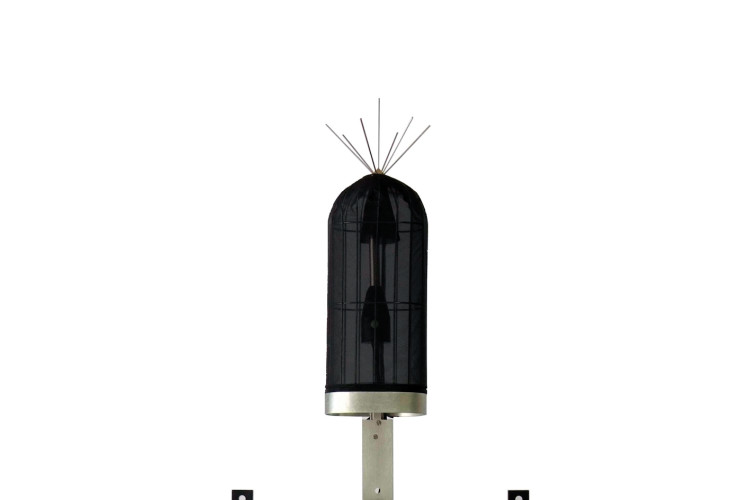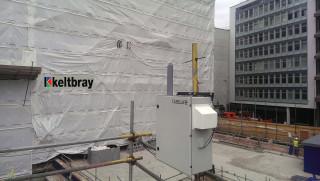Falls from height, vehicle accidents, exposure to asbestos and hand-arm vibration – they’re all too common on construction sites. But these days most people are aware of the risks and do something to mitigate them.
With general levels of noise and dust, the picture’s often different. For many people, construction sites are just noisy, dusty places and that’s all there is to it. But the effects they can have, both on site and directly beyond the hoarding, can range from minor irritation to serious health hazard.
Of course there are mechanisms in place to limit and control noise and dust emanating from construction sites. “There are legal requirements and legislative controls in place,” says Shaun Knott, business manager with Casella Measurement, a leading manufacturer of noise and dust monitoring equipment. These include the Noise Act 1996, the Environmental Noise (England) Regulations, the Control of Pollution Act 1974 and the Environmental Protection Act. Most of this legislation is non-prescriptive – for example there are no set limits laid down for noise – and enforcement is generally up to the local authority. On large construction projects, the contractor has to apply to the local authority for a Section 61 agreement under the Control of Pollution Act before work starts on site.
“The local authority will want to know the hours you’ll be working, and the sort of work you’re doing,” explains Knott. “You give them the information and they will tell you if you need to monitor the noise or dust levels.” Noise levels are usually set against the background noise within the locality with lower permissible limits in quiet residential areas and higher limits in bustling commercial or industrial areas.

Dust levels, however, have pre-set limits: 150 mg/m3 triggers an initial warning; 300 mg/m3 requires remedial action and 500 mg/m3 requires the offending activity to cease instantly. Not surprisingly, monitoring noise and dust is a familiar activity for most major contractors, and especially so for demolition contractors. However, Casella has made the task easier and more manageable with the launch of a new all-in-one noise and dust monitor called the Boundary Guardian.
This device is quickly and easily calibrated with trigger and action values and uses GSM to send readings in real time to a remote computer so that the client can monitor its compliance at all times. According to Casella, the Boundary Guardian is the first simultaneous multi parameter monitor for dust, noise, wind speed and wind direction in the UK from a single manufacturer. One of the first customers to use the Boundary Guardian is demolition specialist Keltbray, which first used the device earlier this year on a site next door to a school in the City of London.
“The dust and noise associated with the work we were carrying out had to be managed,” says Altin Lleshi, Keltbray’s safety, health and environment advisor. “This required 24-hour monitoring.” The Boundary Guardian has provided detailed and accurate data that Keltbray could interrogate and record at any time – which also pleased the local environmental health officer, according to Lleshi. Following this installation, Keltbray has invested in five more Boundary Guardians which are to be used on the demolition of part of the Heygate Estate at Elephant & Castle. The units - three of which will be solar-powered -will be located at strategic points around the site, which is surrounded by residential and office buildings.
Real-time interactive monitoring of noise and dust, along with detailed record-keeping, is a boon to any contractor, says Knott, since compliance depends on a number of variable factors.
“Generally speaking any noise you make on site must not be audible inside neighbouring buildings with the doors and windows closed,” he says. “But some noise is inevitable on a construction site and there may be times when a higher level of noise is allowed.” For example, in a city centre, it would be acceptable for a moderate amount of noise to be made during the hours of 8 am – 5 pm; enough to be heard but not so much as to disturb others. On a highly sensitive site, the precise parameters will have to be negotiated with the local authority and the neighbours. Whatever the parameters, if there is a complaint then the local authority is duty bound to investigate. This is where data recorded by equipment like the Boundary Guardian has a crucial role to play. If the equipment proves that the noise or dust level was within permitted levels, the contractor has a defence; if not, then an explanation is required. In any case, the Boundary Guardian will have sent a warning in real time as the threshold was approached and again when the limit was exceeded. It’s certainly good to know where you stand at any given moment, says Knott, since a gross breach of the regulations is a matter for the police: “The police authorities have a legal responsibility in such cases to enter the premises and seize the source of the nuisance. They can close down a site instantly”.
Got a story? Email news@theconstructionindex.co.uk
.png)



